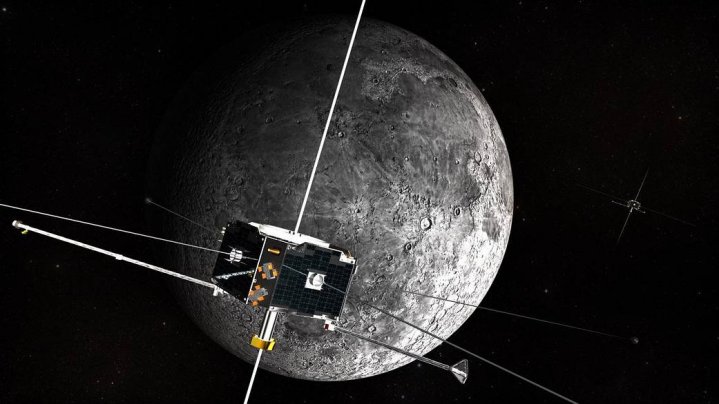
China has recently announced its upcoming lunar mission, 'Chang'e-4' which will be launched in late 2018 and now the country's space agency has unveiled its ambitious plan to create a mini biosphere on the dark side of the moon by growing flowers and silkworms to redeem man's dream to live one day on the Moon.
If everything goes well, insects, plants, potato seeds and arabidopsis - a small flowering plant belonging to the mustard family will be taken to the dark side of the moon on the Chang'e-4 lander launch which is expected to take place in December 2018.
The insects, plants, and seeds aboard will be placed in a specially designed 18cm tall bucket-like tin made of aluminum alloy materials. Water, nutrient solutions, and a small data transmission system will be also sent to the lunar surface for growing the plants.
Though known as the dark side of the moon, experts believe that this area will also receive adequate sunlight. A small tube will be used to direct natural sunlight to the tin which will help plants to grow on the lunar surface.
As the plants emit Oxygen, it will help silkworms to hatch from their cocoons. Later, silkworms will emit carbon dioxide which will, in turn, allow plants to grow freely, thus creating a mini ecosystem on the moon.
Previously, scientists at the International Space Station had grown plants, while Chinese astronauts at Tiangong-2 space lab had cultivated rice and arabidopsis. It should be noted that these cultivations were carried out at an altitude of 400 kilometers which is in low-earth orbit.
"Our experiment might help accumulate knowledge for building a lunar base and long-term residence on the Moon. The environment on the Moon, 380,000 kilometres from the Earth, is more complicated," said Professor Liu Hanlong, chief director of the experiment and vice president of Chongqing University, reports Xinhua news agency.
Liu added that potato will emerge as the major food for astronauts during space journeys in the future.
According to experts, the moon's gravity which is 16 times lesser than the earth will be the major barrier while trying to create a mini ecosystem there. The climate on the moon is also harsh, and it usually ranges from -100 to 100 degree Celsius.
"We have to keep the temperature in the 'mini biosphere' within a range from 1 degree to 30 degrees, and properly control the humidity and nutrition. We will use a tube to direct the natural light on the surface of Moon into the tin to make the plants grow," said Xie Gengxin, chief designer of the experiment.









